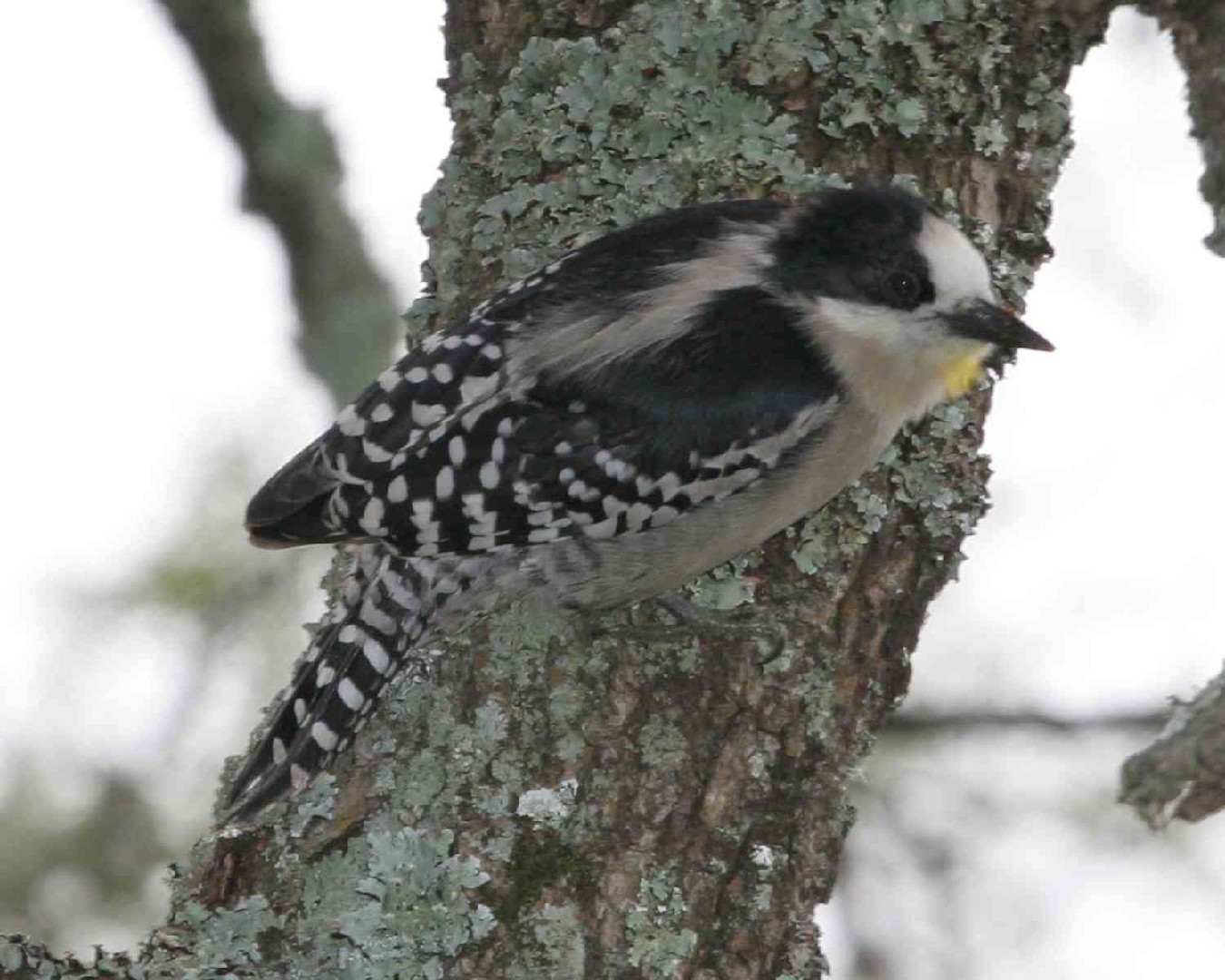White-fronted Woodpecker
A species of Melanerpine Woodpeckers Scientific name : Melanerpes cactorum Genus : Melanerpine Woodpeckers
White-fronted Woodpecker, A species of Melanerpine Woodpeckers
Botanical name: Melanerpes cactorum
Genus: Melanerpine Woodpeckers
Content
Description General Info
 Photo By Lip Kee Yap , used under CC-BY-SA-2.0 /Cropped and compressed from original
Photo By Lip Kee Yap , used under CC-BY-SA-2.0 /Cropped and compressed from original Description
The adult white-fronted woodpecker is about 17 cm (7 in) in length. The sexes are similar in appearance except for a small patch of red, not always visible, on the crown in males. The crown, nape and upper parts are glossy black, apart from a thin white line running from a white nape patch down the centre of the back. A black mask surrounds the eye and extends to the mantle. The upper side of the wings is bluish-black, boldly barred with white, and the underside is browner. The upper side of the tail is black with white markings and the underside is browner. The fore-crown and cheeks are white, and the chin and throat are white, yellow or buff. The breast and belly are some shade of grey, with indistinct barring on the flanks and lower belly. The iris is reddish-brown, the beak greyish-black and the legs grey. Juveniles are similar to the adults but are generally a duller black, the underparts being more heavily barred, and both sexes having traces of red or orange on the mid-crown. 
Size
18 cm
Nest Placement
Cavity
Feeding Habits
White-fronted Woodpecker consumes insects and fruits, with a preference for ants and beetles. It has been observed eating Eared Dove eggs. White-fronted Woodpecker forages in groups and caches food. It displays a unique adaption to sap-feeding from trees, especially during colder months, accounting for a significant portion of its dietary observations. White-fronted Woodpecker gleans and probes on palms, trunks, branches, and cacti.
Habitat
The white-fronted Woodpecker, occupies diverse dry woodlands across central South America, including environments such as chaco, savannas, and semi-deserts, as well as gallery forests and montane scrub. Adapted for arid areas, white-fronted Woodpecker is commonly found amidst cacti and palm groves, flourishing from lowland areas up to elevations of 1700 m, and in some parts, up to 2500 m.
Dite type
Insectivorous
General Info
Feeding Habits
Bird food type
Distribution Area
The white-fronted woodpecker is native to central South America. Its range includes southeastern Peru, Bolivia, Uruguay, northern Argentina, Paraguay and southeastern Brazil. Its typical habitat is chaco, savannah and semi-desert with scattered trees, shrubs and cacti. It also occurs in palm groves, gallery forest and agricultural land with scattered trees. It lives at altitudes of up to 2,500 m (8,000 ft). It is a non-migratory, sedentary species. 
Species Status
Not globally threatened.
Scientific Classification
Phylum
Chordates Class
Birds Family
Woodpeckers Genus
Melanerpine Woodpeckers Species
White-fronted Woodpecker